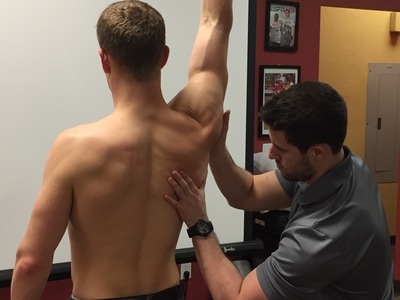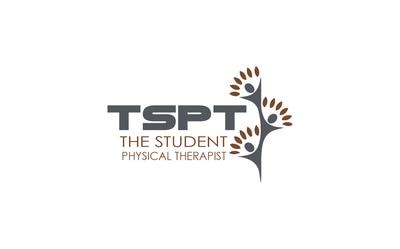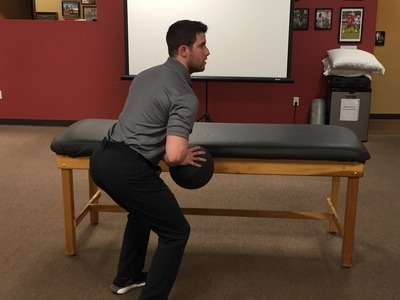- Home
- About Us
- TSPT Academy
- Online Courses
-
Resources
- Newsletter
- Business Minded Sports Physio Podcast
- Day in the Life of a Sports PT
- Residency Corner
-
Special Tests
>
-
Cervical Spine
>
- Alar Ligament Test
- Bakody's Sign
- Cervical Distraction Test
- Cervical Rotation Lateral Flexion Test
- Craniocervical Flexion Test (CCFT)
- Deep Neck Flexor Endurance Test
- Posterior-Anterior Segmental Mobility
- Segmental Mobility
- Sharp-Purser Test
- Spurling's Maneuver
- Transverse Ligament Test
- ULNT - Median
- ULNT - Radial
- ULNT - Ulnar
- Vertebral Artery Test
- Thoracic Spine >
-
Lumbar Spine/Sacroiliac Joint
>
- Active Sit-Up Test
- Alternate Gillet Test
- Crossed Straight Leg Raise Test
- Extensor Endurance Test
- FABER Test
- Fortin's Sign
- Gaenslen Test
- Gillet Test
- Gower's Sign
- Lumbar Quadrant Test
- POSH Test
- Posteroanterior Mobility
- Prone Knee Bend Test
- Prone Instability Test
- Resisted Abduction Test
- Sacral Clearing Test
- Seated Forward Flexion Test
- SIJ Compression/Distraction Test
- Slump Test
- Sphinx Test
- Spine Rotators & Multifidus Test
- Squish Test
- Standing Forward Flexion Test
- Straight Leg Raise Test
- Supine to Long Sit Test
-
Shoulder
>
- Active Compression Test
- Anterior Apprehension
- Biceps Load Test II
- Drop Arm Sign
- External Rotation Lag Sign
- Hawkins-Kennedy Impingement Sign
- Horizontal Adduction Test
- Internal Rotation Lag Sign
- Jobe Test
- Ludington's Test
- Neer Test
- Painful Arc Sign
- Pronated Load Test
- Resisted Supination External Rotation Test
- Speed's Test
- Posterior Apprehension
- Sulcus Sign
- Thoracic Outlet Tests >
- Yergason's Test
- Elbow >
- Wrist/Hand >
- Hip >
- Knee >
- Foot/Ankle >
-
Cervical Spine
>
- I want Financial Freedom
- I want Professional Growth
- I want Clinical Mastery
Anterior Apprehension Test
Purpose of Test: To assess for anterior instability of the glenohumeral joint capsule.
Test Position: Supine
Performing the Test: The examiner flexes the patient’s elbow to 90 degrees and abducts their shoulder to 90 degrees. The examiner then slowly externally rotates the patient’s shoulder. The test is considered positive if the patient demonstrates apprehension during shoulder external rotation.
Apprehension-Relocation method: The examiner flexes the patient’s elbow to 90 degrees and abducts their shoulder to 90 degrees. The examiner then slowly externally rotates the patient’s shoulder. If the patient experiences apprehension during external rotation, the examiners places a firm hand over the anterior shoulder, increasing shoulder stability. The examiner again applies an external rotation force to the shoulder. If the patient has apprehension during the first external rotation and no apprehension during the second external rotation, it is considered a positive test.
Diagnostic Accuracy: Sensitivity: 52.8; Specificity: 98.9; +LR: 48; -LR: .48
Importance of Test: Patients that demonstrate shoulder instability are at an increased risk of shoulder injury and dislocation. The causes of shoulder instability can be traumatic, microtraumatic, or genetic. Regardless of the mechanism of injury, these patients will often have muscle length discrepancies, lengthened joint capsules, and/or other connective tissue problems. Specifically with anterior apprehension, the most common injury is known as a Bankart lesion. In a Bankart lesion there is detachment of the anterior-inferior labrum with its attached to the anterior portion of the inferior glenohumeral ligament. Other causes of anterior instability include superior labral anterior and posterior (SLAP) detachment and humeral avulsion of the glenohumeral ligaments (HAGL). Regardless of the which specific structure is injured, it is important to spot an apprehension sign because a dislocated shoulder can cause damage to the surrounding nerves and vascular supply.
Note: these tests should only be performed by properly trained health care practitioners.
Test Position: Supine
Performing the Test: The examiner flexes the patient’s elbow to 90 degrees and abducts their shoulder to 90 degrees. The examiner then slowly externally rotates the patient’s shoulder. The test is considered positive if the patient demonstrates apprehension during shoulder external rotation.
Apprehension-Relocation method: The examiner flexes the patient’s elbow to 90 degrees and abducts their shoulder to 90 degrees. The examiner then slowly externally rotates the patient’s shoulder. If the patient experiences apprehension during external rotation, the examiners places a firm hand over the anterior shoulder, increasing shoulder stability. The examiner again applies an external rotation force to the shoulder. If the patient has apprehension during the first external rotation and no apprehension during the second external rotation, it is considered a positive test.
Diagnostic Accuracy: Sensitivity: 52.8; Specificity: 98.9; +LR: 48; -LR: .48
Importance of Test: Patients that demonstrate shoulder instability are at an increased risk of shoulder injury and dislocation. The causes of shoulder instability can be traumatic, microtraumatic, or genetic. Regardless of the mechanism of injury, these patients will often have muscle length discrepancies, lengthened joint capsules, and/or other connective tissue problems. Specifically with anterior apprehension, the most common injury is known as a Bankart lesion. In a Bankart lesion there is detachment of the anterior-inferior labrum with its attached to the anterior portion of the inferior glenohumeral ligament. Other causes of anterior instability include superior labral anterior and posterior (SLAP) detachment and humeral avulsion of the glenohumeral ligaments (HAGL). Regardless of the which specific structure is injured, it is important to spot an apprehension sign because a dislocated shoulder can cause damage to the surrounding nerves and vascular supply.
Note: these tests should only be performed by properly trained health care practitioners.
|
|
|
Reference: “An evaluation of the apprehension, relocation, and surprise tests for anterior shoulder instability”
"Traumatic anterior shoulder instability in the athlete." The Edinburgh Shoulder Clinic. May 2012.
Copyright © The Student Physical Therapist LLC 2023



